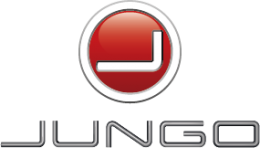September 2013
RoHS 2 and WEEE 2
Restriction of Hazardous Substances RoHS and Waste of Electric and Electronic Equipment WEEE
1) Restriction of Hazardous Substances (RoHS)
A recast of the Directive 2002/95/EC, restriction of the use of certain hazardous substances in electrical and electronic equipment (RoHS 1), took place and on 21st July, 2011, the Directive 2011/65/EU (RoHS 2) came into force. It must be transposed into national law by 2nd January, 2013.
Following points remain unchanged:
- No variation of the Directive (based on article 114 TFEU) in the member states possible.
- No new prohibition of certain substances, no list of candidates.
- Various exceptions of the prohibition of substances.
- Defined duties for manufacturers, importers, and distributers.
Reforms being done:
- Addition of a category 11 in Annex I with a so called open scope (all electrical and electronic equipment fall under the scope); however: There is a transition period for appliances, which now fall under the scope until 22nd July, 2019.
- Extension of the scope via an addition in the definitions (term: "Dependent")
- Explicit mentioning of 10 exceptions, which do not fall under the scope (further information, see last page of Annex).
- New: The representative.
- Certification of the "RoHS conformity" by CE marking.
Important dates:
- 2nd January, 2013: RoHS 2 must be transposed into national law.
- 22nd July, 2014: Period of review for the scope and the restriction of certain substances.
- 22nd July, 2017: Validity of the prohibition of certain substances for industrial surveillance and control instruments.
- 22nd July, 2019: Validity for appliances that did not fall under the scope of RoHS 1, but, are under the scope of RoHS 2 (see category 11).
2) Waste of Electrical and Electronic Equipment WEEE
- A recast of the Directive 2002/96/EC, Waste of Electrical and Electronic Equipment (WEEE 1), took place and on 24th July,
2012, the Directive 2012/19/EU came into force (WEEE 2). It must be transposed into
national law by 14th February, 2014.
Following points remain unchanged:
- An important point is that until 14th August, 2018, the scope of WEEE 2
is identical with the scope of WEEE 1.
A short overview of the Directive 2012/19/EU (WEEE 2):
- Variation of the Directive (based on article 192 TFEU) in the member states possible.
- Scope: Legal situation as in WEEE 1 until 14th August, 2018.
- Until 14th August, 2018: 10 application categories in the scope.
- From 15th August, 2018: 6 application categories and a broader scope.
- Explicit mentioning of 10 exceptions that are outside of the scope.
Important dates:
Collection rates:
- Until 31st December 2015, a collection rate of at least 4 kilograms on average per inhabitant per year of WEEE.
- From 14th August, 2016: Collection rate of 40-45 % of WEEE.
- From 2019: A minimum collection rate to be achieved annually shall be 65 % of the average weight of EEE placed on the market
in the three preceding years in the Member State concerned, or alternatively 85 % of WEEE generated on the territory of that Member State.
Further dates:
- Until 14th February, 2013: Request to the European standardisation organisations to develop European standards for the treatment, including recovery, recycling and preparing for reuse, of WEEE.
- Until 14th February, 2014: Adoption of delegated acts laying down detailed rules for the shipment of WEEE.
- Until 14th February, 2015: Verification period for the scope. Additionally, adoption of implementation acts concerning calculation methods and reports concerning internalization of costs.
- Until 14th February, 2016: Review of the targets regarding recycling.
Industrious Brussels EU District, Avenue des Arts 6-9, 1210 Brussels, Belgium, +32 490 57 57 65
Transparency Register number: 0289344948-82














































































































